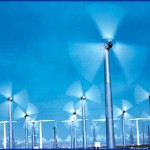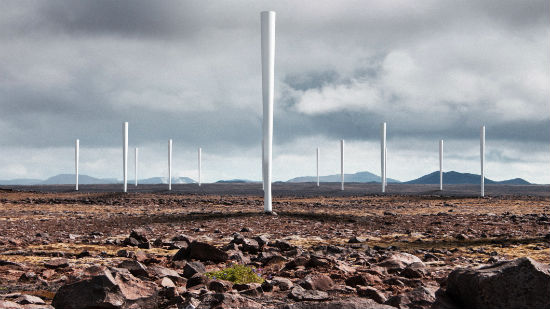
 A doctor writes in Northfield, Minnesota’s newspaper to actually warn residents to “be aware” of a proposal to install two industrial wind turbines.
A doctor writes in Northfield, Minnesota’s newspaper to actually warn residents to “be aware” of a proposal to install two industrial wind turbines.
In his column, Dr. Gary Carlson says that people living too close to wind turbines are getting sick with headaches, difficulty concentrating, sleep disturbance, vertigo, and dizziness. To him, sound waves, audible and inaudible, produced by wind turbines are to blame. Carlson says these can affect internal ear gyroscopes that control sense of motion, balance, and position. “The wind industry wants you to believe that what you can’t hear can’t hurt you,” he claims, “but that has proven to be false.”
But is there really evidence that wind turbines negatively affect the health of those nearby? Carlson notes researchers like Alec Salt (who holds a doctorate in Cochlear Physiology) and Richard James (a noise control consultant), as well as Dr. Nina Pierpont (author of “Wind Turbine Syndrome”) who he says all argue for one-mile setbacks of industrial-size turbines to prevent health problems. Carlson says the one-mile setback is also used in Europe, which has learned through experience that people get sick when they live too close to wind turbines. “Wind energy is good,” he admits, “but wind turbines setbacks are key.”
Additionally, Carlson notes, there are regional precedents for longer setbacks. Goodhue County (MN) has a ten-rotor setback which is 2,475 ft. Wabasha County (MN) also requires a two-mile setback for wind turbines from towns. He asks readers to remember that once a wind turbine is erected, it will be there for the next 25 to 30 years, thus stressing importance in placement.
However, in Maine, another medical professional says the very research that Carlson is using to support his claims isn’t supported by medical evidence at all. Dr. Richard K Jennings is a member of the Maine Medical Association and its Public Health Committee. In a column in the state’s Kennebec Journal, he writes that Pierpont has self-published her book without any fellow medical publications. He even goes as far as to say that “her book was not peer reviewed, but rather received approving comments from friends and associates.”
He also refers to a study conducted by Dr. Michael Nissenbaum that involved residents at Mars Hill reporting negative health effects resulting from nearby wind turbines, which he accuses of having no objective confirmation. However, Jennings does admit that some people do experience health problems from wind turbines, though he says this can be easily corrected. “The sound from wind turbines does create some troublesome problems to a few people in Mars Hill, Vinalhaven, and elsewhere. These problems are being addressed and corrected with technological advances,” he says.
Seems evidence of wind turbine health effects is a little foggy in the U.S., but a report by the Australian National Health and Medical Research Council has come closer to a concrete conclusion. The council researched concerns including infrasound, electromagnetic radiation, shadow flicker, and blade glint. The report found no substantial evidence that sounds below the hearing threshold produce physiological or psychological effects. Noise levels from wind turbines have been assessed as negligible and appear to be no different from the noise found in other everyday situations, according to the report. As for electromagnetic radiation and proximity concerns, the Australian Wind Energy Association says the closeness of the electric cables counters the electromagnetic field, as shielding does with metal armour. Here’s a little more about what the council said of each concern:
Shadow flicker is the flicking on and off of the wind turbine’s shadow as the blades rotate. The primary concern here is that the flickering will cause epileptic seizures, though the report says the risk is very low.
Blade glint happens when sunlight reflects off wind turbine blades and into a person’s eye. However, all major wind turbine blade manufacturers coat their blades with a low reflectivity treatment that prevents reflective glint from the surface of the blade. Therefore, the Australian National Health and Medical Research Council considers the risk of blade glint low as well.
However, the report does end saying that because evidence to health risk is limited it recommends authorities take a precautionary approach and continue to monitor research outcomes.
In another part of the world, Bentin P Gnananesan, a mechetronics engineer has not heard of any negative health affects for those near wind turbines in Nagercoil, the southernmost part of India. “We have hundreds of wind mills, but I have found no such harm for the people,” he says in a comment on an Engineering Exchange blog. “May be most of the problems comes when people get anxiety.”
Joe Hiemenz, a technical communications specialist in the manufacturing industry, says he’s not sure of the evidence of health risk from wind turbines, but he is sure that clean energy is the right choice. “I tend to be skeptical of the reports that show no conclusive evidence of health risk,” he writes in a blog comment on the Engineering Exchange. “Yet, if a windmill farm poses some health risk, the harm to society of not using this alternative energy outweighs it. Most all power generation and fuel production facilities pose risk ― nuclear, coal, oil, and gas. Although wind farms are one of the cleanest sources of power, we shouldn’t expect them to be risk free.”
Jennings agrees that rather than be concerned with health effects from wind turbines, the focus should be on health effects without their use. “There is no more critical and overwhelming threat to the health of all those on this planet than the present and increasing changes in our climate, compounded by the exhaustion of fossil fuel,” he says. “To fail to address essential measures adaption and amelioration by development of all forms of alternative energy is totally unacceptable.”
This are the facts about being aware of installing wind turbines too close of residential area. So if you have other opinion please writes us some words about it.



